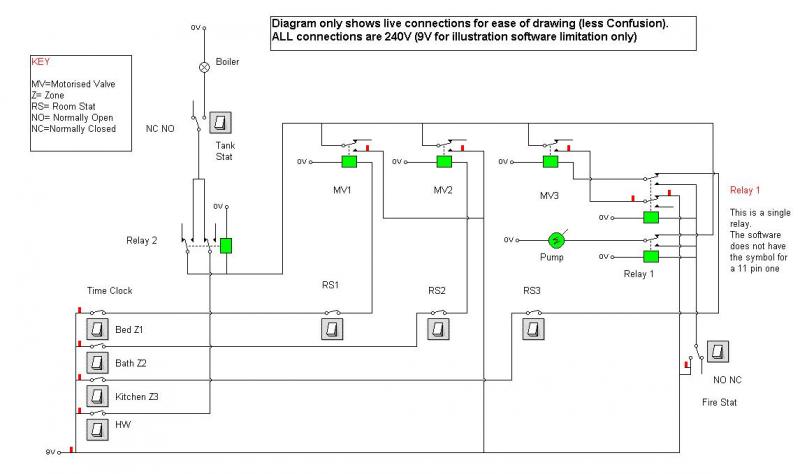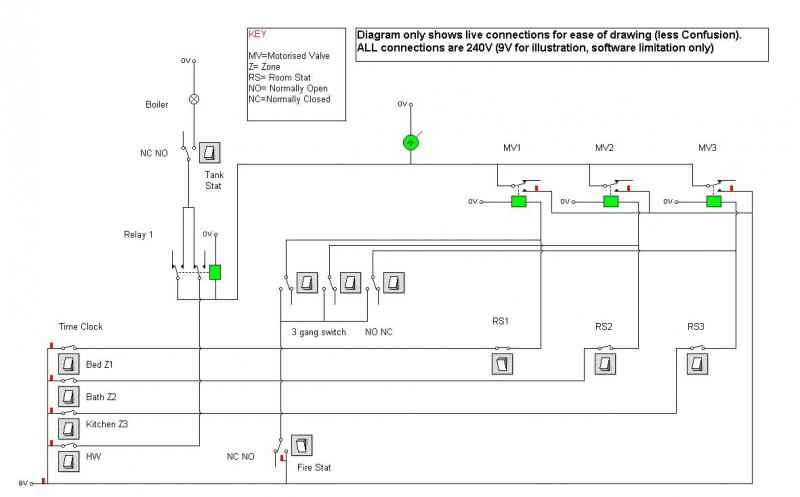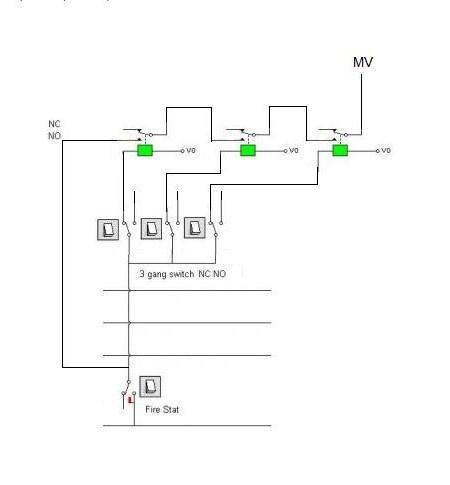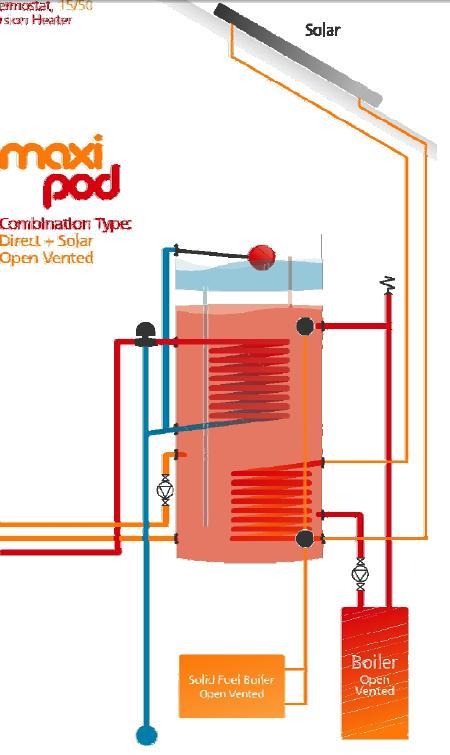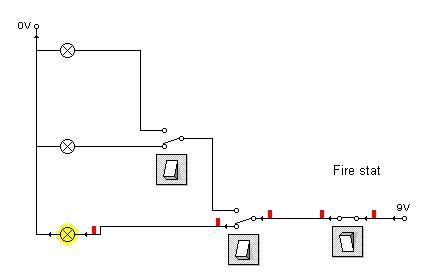Hi I am not 100% sure this is in the correct location but It is somewhat to do with wiring.
Below is the current wiring for my heating, it consists of.
1x 4 zone time clock
3x Room stats
3x Motorised valves
1x Tank stat
1x Fire stat
As you can see from the above diagram at present if the fire tries to over boil the hot tank the fire stat automatically opens zone 3 and turns on the radiator pump until the temp lowers
The fire stat also deactivates the time clock zone 3 from being able to call the boiler for heat
I am thinking of doing away with this as shown below (relay 1 removed from above diagram), because in theory Z1, Z2 and HW can still call for the boiler but nothing should happen because the tank stat will know the tank is hot enough.
My issue is I want to be able to manually (eventually automated with 3 channels of a cbus relay) select which zone the fire dumps to but there always has to be one zone on.
There are a number of issues with just adding a 3 gang switch like above diagram.
1 All can be accidentally left off
2 If two or more are on and the time clock comes on under normal conditions for one zone the other zones will also come on.
I am sure with a bit more configuring I will be able to work it out but I seem to be stumped at the minute, I have drawn a few other options with relays and the likes but I keep running into issues. I am sure there is a simple answer that I am just over looking
Any help will be great
Thanks
Below is the current wiring for my heating, it consists of.
1x 4 zone time clock
3x Room stats
3x Motorised valves
1x Tank stat
1x Fire stat
As you can see from the above diagram at present if the fire tries to over boil the hot tank the fire stat automatically opens zone 3 and turns on the radiator pump until the temp lowers
The fire stat also deactivates the time clock zone 3 from being able to call the boiler for heat
I am thinking of doing away with this as shown below (relay 1 removed from above diagram), because in theory Z1, Z2 and HW can still call for the boiler but nothing should happen because the tank stat will know the tank is hot enough.
My issue is I want to be able to manually (eventually automated with 3 channels of a cbus relay) select which zone the fire dumps to but there always has to be one zone on.
There are a number of issues with just adding a 3 gang switch like above diagram.
1 All can be accidentally left off
2 If two or more are on and the time clock comes on under normal conditions for one zone the other zones will also come on.
I am sure with a bit more configuring I will be able to work it out but I seem to be stumped at the minute, I have drawn a few other options with relays and the likes but I keep running into issues. I am sure there is a simple answer that I am just over looking
Any help will be great
Thanks


